NSK’s new “Active Casters”
NSK exhibited at the International Robot Exhibition 2022 (iREX2022) held at Tokyo Big Sight in March, 2022. NSK is working on “Setting the Future in Motion,” as outlined in NSK Vision 2026, and featured its industrial and service robots at iREX2022 under the theme of “Becoming more people and environmentally friendly.” For this article, we spoke with the technology development staff responsible for NSK’s new “Active Casters” exhibited at this event.

Profile

Daisuke Kondo (left)
Coordinator
Technology Development Department 1
New Field Products Development Center
Ko Fujioka (right)
Coordinator
Technology Development Department 1
New Field Products Development Center
Smooth omnidirectional movement based on a new mechanism
Kondo Active Casters were developed for use in service robots and mobility drive applications. We developed them in collaboration with Masayoshi Wada and his lab at the Tokyo University of Science. When you hear the term, “service robot,” you might imagine a robot that gives people information or carries things in a facility or residence. Public expectations are growing for service robots as part of a trend toward an even more comfortable and prosperous society. As such, this is an area where market growth is anticipated.
It all started with a unit that our team had developed but was not commercialized for various reasons. I felt it was a shame that the technology was not being used, so I started looking into development possibilities in my free time, spending an hour a week with some teammates working on it. Service robots need to work in all kinds of spaces, so they need to be able to coexist and work together with humans. As one such requirement, I think it is important for robots to be able to move responsively in all directions. This is why we developed the Active Caster -an electric-powered caster wheel unit. In addition to moving straight forward and backward, it can move diagonally or sideways, and change directions instantaneously and effortlessly.
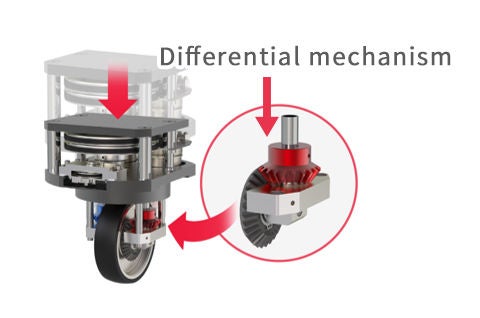
Fujioka The Active Caster has two key advantages. The first is its compact design. With conventional technology, the wheel rotation (drive) and turning (steering) are performed by separate motors. This means each motor must have a large power output, requiring the units themselves to be quite large. By contrast, our Active Caster is an electric-powered turning unit, and provides both drive and steering functions based on the difference in rotation between two motors. Using this highly efficient design, even a small motor can achieve the same performance as conventional robot wheels. As a result, we were able to use a motor that is smaller than the ones employed in wheel units where the drive and turning functions are separate. This allows any service robot equipped with our Active Casters to be more compact and to rotate in a smaller space.
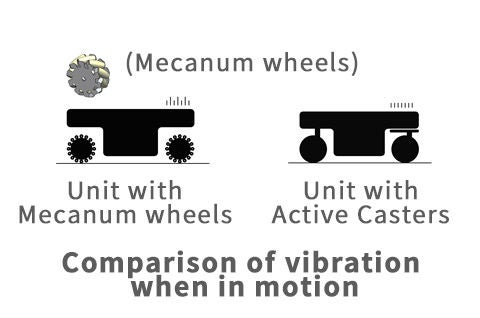
The second advantage of the Active Castor is that it generates less vibration compared to an omnidirectional mobility unit using Mecanum wheels. Mecanum wheels have a complicated surface which causes vertical vibration when in motion. By contrast, since the Active Caster uses ordinary wheels, there is minimal vibration. Moreover, the caster design allows the robot to change direction while still moving forward, just like an office chair on casters. This also means less vibration when turning.
Active Casters make smooth omnidirectional movement possible
Kondo Active Caster technology can be used in a variety of applications such as nursing care facilities, libraries, and other locations with tight spaces. It can also be in the transportation of food and liquids, and in human mobility applications. Since this technology can be used for so many different purposes, we gave our display robot a very abstract design. Visitors might ask each other, “Is this an egg?” Or, “No, it’s a penguin, right?” Or, “Wouldn’t this motion be useful in our application?” The aim is to stimulate the imagination of visitors, and enable them to picture the Active Casters in use with their own robot project. We wanted to strike the right balance, because an unimaginative design wouldn’t speak to the heart and something too bizarre wouldn’t be considered useful.
Technology that can help robots and humans coexist
Fujioka The Active Caster was developed to be compact and easy to adopt. I came up with the idea to use the differential mechanism while sitting in the bath. Since it would help make the unit more compact, I was convinced it was the right way to go! I think this technology will help make robots more suitable for human needs. The Active Caster can change direction instantly in any direction, and is quiet and compact. We believe that it will make robots more useful in daily life.
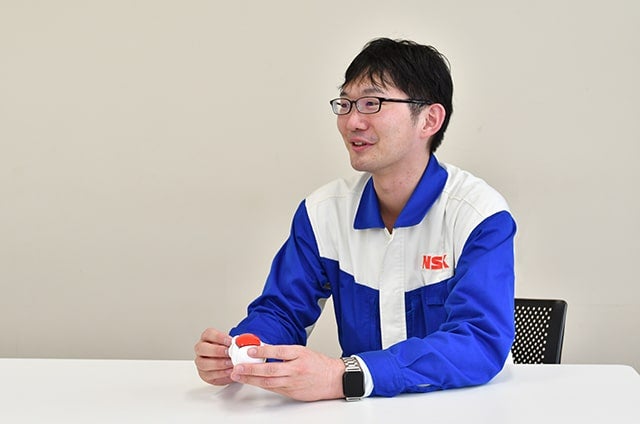
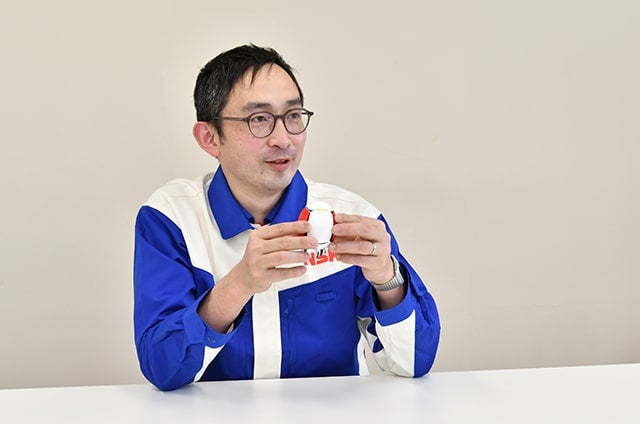
Kondo Contributing to society is a major motivation for me, so taking on new challenges is also very important for my personal fulfillment. In addition to obtaining valuable input from users and others in the company, our team will continue to listen to our hearts, and work on projects that we are passionate about. I hope that the Active Caster exhibit will touch people's hearts and help set their minds in motion.
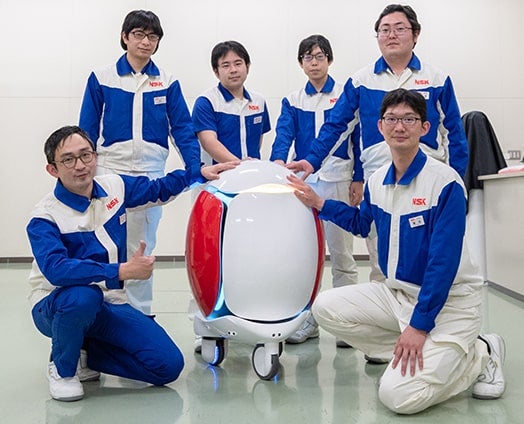
Active Caster Development Team
